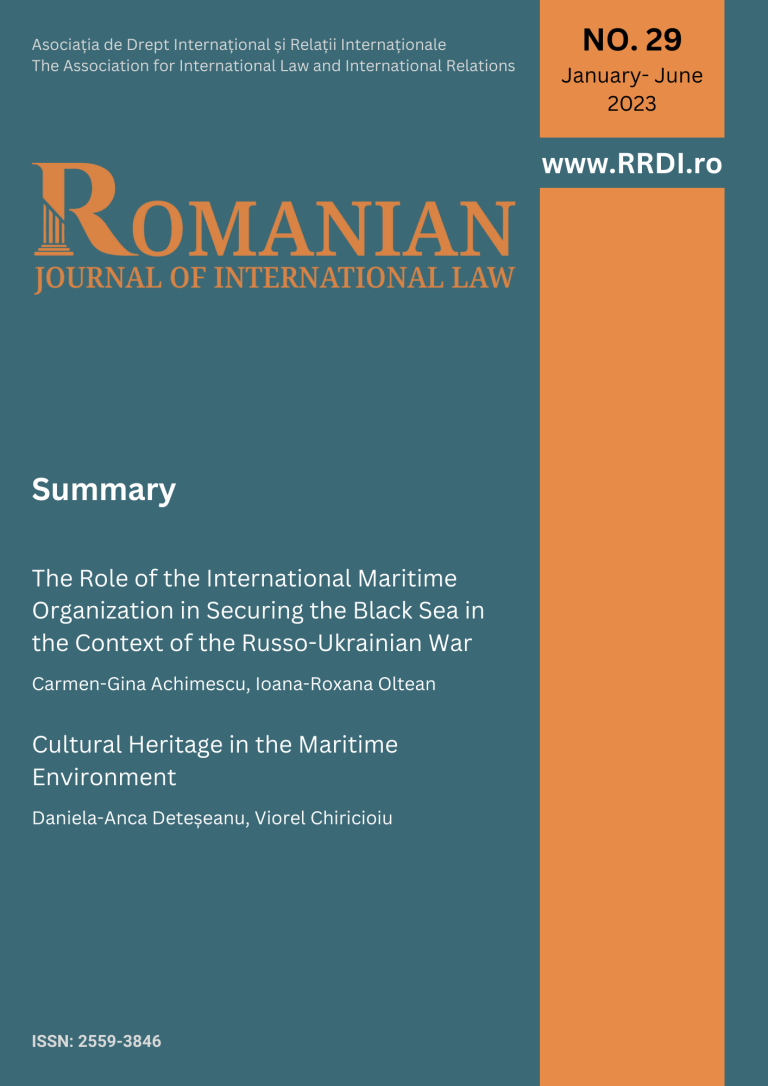Andreea ZALOMIR*
Abstract: Beginning with 1966, under the aegis of the United Nations, five international treaties covering various aspects of states’ activities in outer space came into existence, the most important being the Treaty on Principles Governing the Activities of States in the Exploration and Use of Outer Space, including the Moon and Other Celestial Bodies or “the Outer Space Treaty” (OST). However, as technological development progressed and states incurred new vulnerabilities from their dependence on space-located assets, the danger of conflict in this new realm also increased, thus transforming outer space into an area of confrontation. Currently, there is no clarity as to the interpretation of international legal norms in the particular context of outer space warfare. The international legal community has promoted two initiatives, with the aim of drafting a manual on the applicability of international law in the context of space military operations. Both the Manual on International Law Applicable to Military Uses of Outer Space (MILAMOS) and the Woomera Manual on the International Law of Military Space Operations attempt to draw from other relevant manuals, such as the San Remo Manual or the Tallinn Manual which contain soft law rules on armed conflicts at sea and, respectively, on cyberspace conflicts.[1] The purpose of the present paper is to analyse the five UN treaties pertaining to outer space and to clarify certain issues related to the legal regime of this environment, such as the definition of outer space, the demarcation of outer space from airspace and the legal status of the geostationary orbit.
Key-words: Outer Space Treaty; geostationary orbit; delimitation; customary international law; res communis.
* Andreea Zalomir (andreea.zalomir10@gmail.com) has an LL.B in International and European Law from the Hague University of Applied Sciences and a Master’s Degree in Security and Diplomacy from the National School of Political and Administrative Studies (SNSPA). During the last three years, she interned with the UNHCR Romania, the International Criminal Court and the European Commission. The opinions expressed in this paper are solely the author’s and do not engage the institution she belongs to.
[1] “What is the MILAMOS Project”, available at <https://www.mcgill.ca/milamos/>, last visited 10/09/2020 (hereinafter cited as: The MILAMOS Project); “Drafting the Woomera Manual”, available at https://law.adelaide.edu.au/woomera/drafting-the-woomera-manual>, last visited 10/09/2020 (hereinafter cited as: The Woomera Manual).

